
views
Converting Units

Compare your two units. The two units must measure the same thing. For example, in the problem "convert 2 inches into centimeters," both inches and centimeters measure length. If your units measure two different things (like length and weight), you can't convert between them. People often get confused about length, area, and volume, which are three different things. Remember that "square" or "" means area, and "cubic" or "" means volume. You can also write this example as 2 in. = ? cm.

Look up the conversion. Before you can do the math, you need to know how much larger one unit is than the other. If the conversion you find has many decimal places, round to the nearest significant digit. If you don't know what a significant digit is, round to the second or third digit. For example, if you need to convert 2 inches to centimeters, you need to know that 1 inch = 2.54 centimeters.

Write the conversion as a fraction. Write this conversion as a fraction, including units. Put the unit you start with on bottom (the denominator), and the unit you're converting to on top (the numerator). For example, write /1 in.. You can read this as "2.54 centimeters per inch".
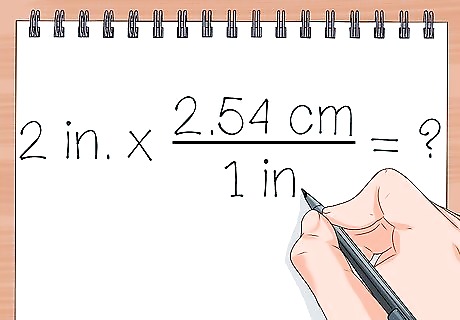
Write a multiplication problem with your original number and the fraction. Multiplying these two numbers together will give you your answer. To start this, write out the multiplication problem, with units after each value. 2 in. x /1 in. = ?

Solve the multiplication problem. It's important to keep track of your units while you do this. Every unit in the equation should still be there during each step. 2 in. x /1 in. = /1 in. = / in.
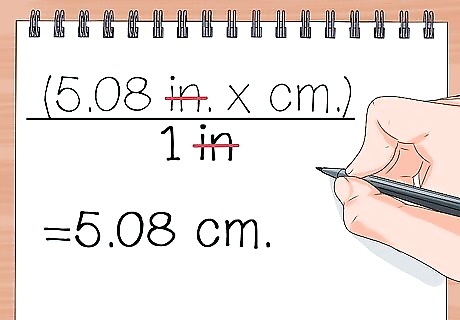
Cancel units that appear on top and bottom. If a unit is on the top and bottom of the fraction, cross it out. Whatever you're left with should be your answer. / in. = 5.08 cm.
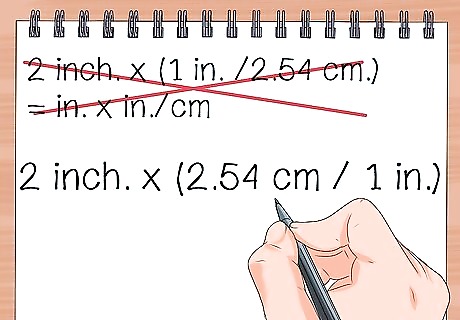
Correct mistakes. If your units don't cancel, start over and try again. You might have put the wrong half of the fraction on top. For example, if you multiplied 2 inch. x (1 in. / 2.54 cm), your answer will have units of "in. x in. / cm," which doesn't make any sense. You realize the inches will cancel if you flip the fraction, so you try again with 2 inch x (2.54 cm / 1 in.).
Converting Values with Multiple Units

Write down your problem. Figure out exactly what the problem is asking, and write it as a math problem. Here's an example: If a bicycle is moving 10 miles per hour, how many feet does it travel in one minute? Write this as "10 miles / hour = ? feet / minute" or "10 miles / h = ? ft / min".

Find the conversion for one unit. Remember, you can only convert between two units that measure the same thing. In our example, we have units that measure length (miles and feet), and units that measure time (hours and minutes). Start with one pair and find the conversion between them. For example, 1 mile = 5,280 feet.
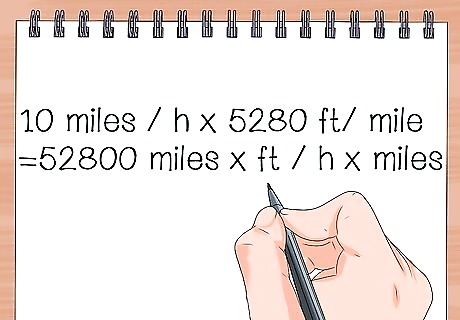
Multiply your number by the conversion fraction. Just as describe in the section above, we can write the conversion as a fraction to cancel out units. Make sure to include every unit in your calculations. / h) x / mile = / h x miles

Cancel out your units. One of your units should be on the top and the bottom, so you can cancel them. You aren't done yet, but you're getting closer. / h x miles = / h

Multiply with another conversion fraction the same way. Choose a unit that hasn't been converted, and write down the conversion as a fraction. Remember to arrange the fraction so the units will cancel out during multiplication. In our example, we still need to convert hours to minutes. 1 hour = 60 minutes. Right now, we have 52800 ft / h. Since hours (h) is on the bottom, we want our new fraction to have hours on top: 1 hour / 60 minutes. / h x / 60 min = / h x min
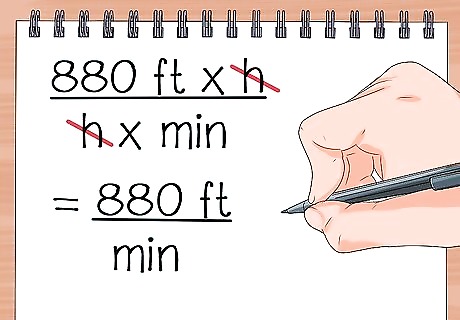
Cancel units. Another unit should cancel out, just as it did before. / h x min = / min

Repeat until the conversion is done. If your answer is in the units you were trying to convert to, you're done with the problem. If you're not there yet, convert another unit with the same method. Once you're used to this method, you can write all the conversions on one line. For example, we could solve our example problem like this: /h x /mile x /60 min =/h x /mile x /60 min = 10 x 5280 ft x /60 min = 880 ft / min.
Converting in the Metric System
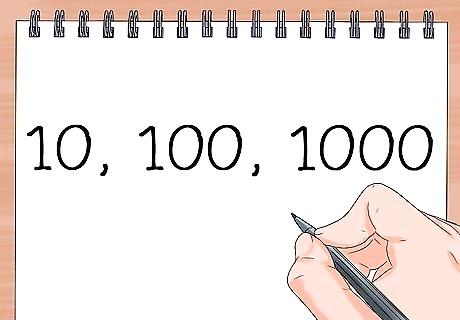
Understand the metric system. The metric system, also called the decimal system, is designed for easy conversion. To convert from one metric unit to another, you only have to work with round numbers: 10, 100, 1000, and so on.

Learn the prefixes. Metric unit of measurements use prefixes to show how big or small the measurement is. Here's an example with units of weight, but all other metric units use the same prefixes. The prefixes below are in italics, but you can do most conversions with just the most common one, in bold. kilogram = 1000 grams hectogram = 100 grams dekagram = 10 grams gram = 1 gram decigram = 0.1 grams (one tenth) centigram = 0.01 grams (one hundredth) milligram = 0.001 grams (one thousandth)
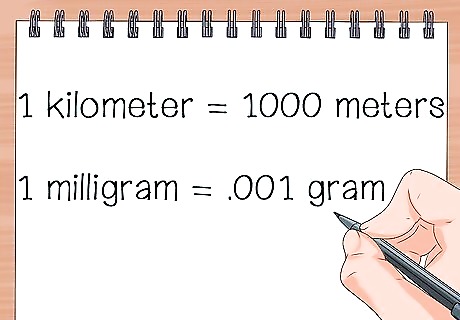
Use the prefixes in conversion. If you know the prefixes, you don't need to look up the conversion every time you need to convert. The prefixes already tell you the conversion. Here are a couple examples: To convert from kilometers to meters: kilo means 1000, so 1 kilometer = 1000 meters. To convert from grams to milligrams: milli means .001, so 1 milligram = .001 gram.

Move the decimal point instead of doing calculations. The best part about metric conversion is skipping all the calculations. Multiplying a number by 10 is the same as moving the decimal point to the right. Dividing a number by 10 is the same as moving the decimal point to the left. Here's an example of how to use this: Problem: convert 65.24 kilograms to grams. 1 kilogram = 1000 grams. Count the number of zeroes: three. That means we multiply by 10 three times, or just move the decimal three spaces to the right. 65.24 x 10 = 652.4 (multiplied once) 652.4 x 10 = 6524 (twice) 6524 x 10 = 65240 (three times) The answer is 65240 grams.

Practice more difficult problems. It gets a little trickier when both the units you're converting between have prefixes. The easiest way to solve this is to convert to the base unit (no prefix) first, then convert to the final unit. Here's an example: Problem: convert 793 milliliters to decaliters. 1 milliliter = 0.001 liters. There are three zeroes, so we move the decimal point three to the left. (Remember, move left when dividing.) 793 milliliters = 0.793 liters 10 liters = 1 dekaliter, so 1 liter = 0.1 dekaliters. There is one zero, so move the decimal point one to the left. 0.793 liters = 0.0793 dekaliters.

Check your answer. The mistake that's easiest to make is multiplying instead of dividing, or vice versa. When you get your final answer, check that it makes sense: If you converted to a larger unit, your number should get smaller. (Just like 12 inches converts to 1 foot.) If you converted to a smaller unit, your number should get larger. (Just like 1 foot converts to 12 inches.) If your result doesn't match this, check your work.



















Comments
0 comment